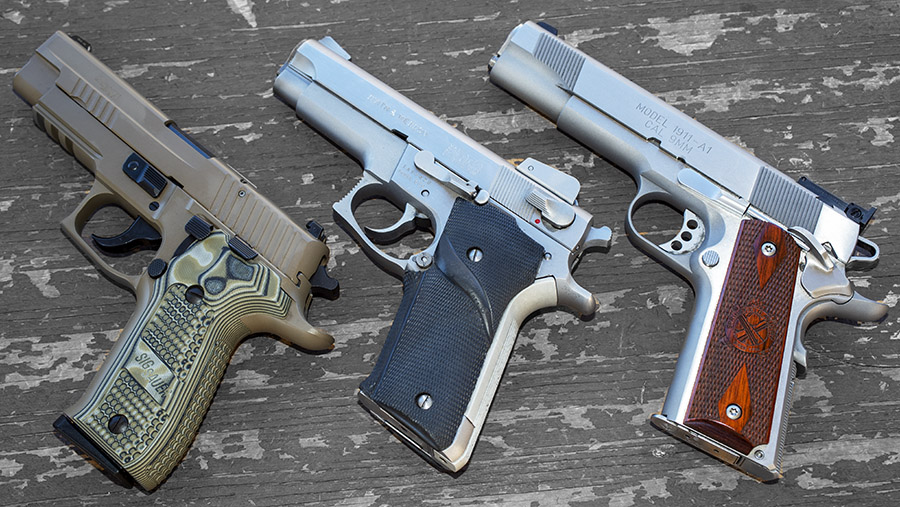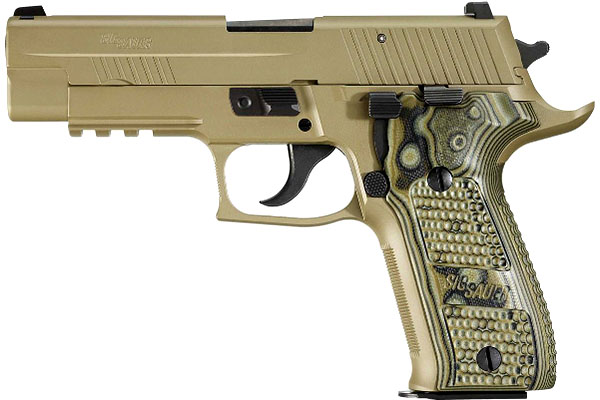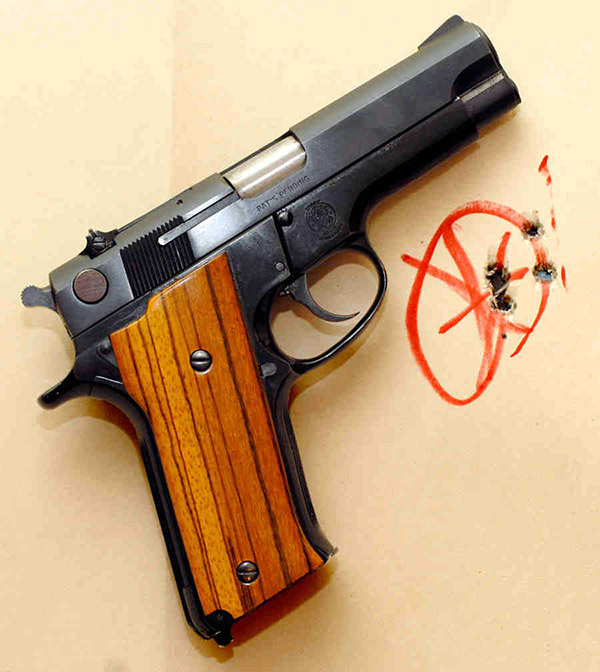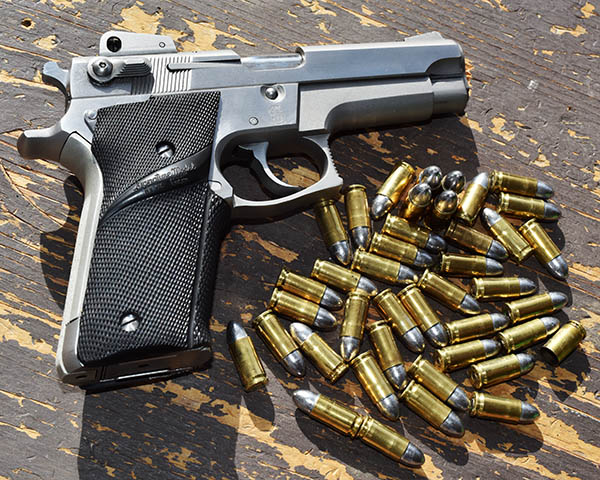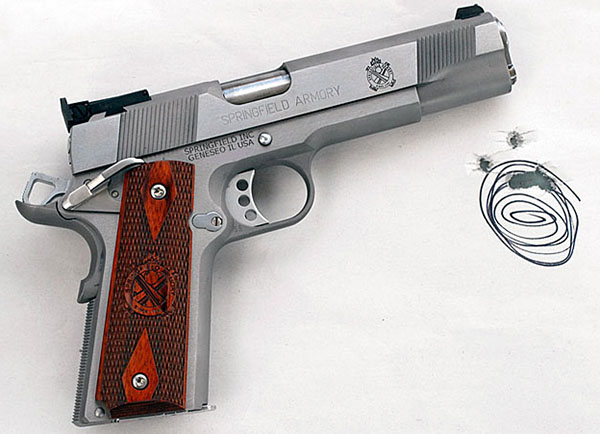Back in January I tested a bunch of 9mm cast bullet loads in the three handguns you see above: A SIG P226 Scorpion, a Smith and Wesson Model 659, and the Springfield Armory 1911 Target. For that test series (you can read it here), all the loads used the Missouri 125-grain cast roundnose bullet with different powders and different charge weights. My cast bullet testing showed the SIG to be the most accurate, followed by the Springfield and then the Smith and Wesson Model 659.
I promised an update with jacketed bullets to assess accuracy and functionality of all three handguns (and to find favored accuracy loads for each). It took a while, but I finally got around to making good on that promise this past week. The six different loads I tested for the jacketed 9mm test series are summarized below:

Actually, the term “jacketed” doesn’t really apply to the Xtreme bullets (they are copper plated, not copper jacketed). The Armscor bullets are brass jacketed. Both the Winchester and Speer bullets are copper jacketed bullets. As you can see from the table above and the photos below, the Xtreme, Armscor, and Winchester bullets were of the roundnose configuration. The Speer 147-grain bullets were jacketed flatnosed bullets. I didn’t try any hollow points in this test series; I prefer roundnose bullets in my 9mm handguns. They are reliable.
All groups were 5 shot groups. I shot a total of 360 rounds in the two test series (both the jacketed and cast bullet accuracy tests).
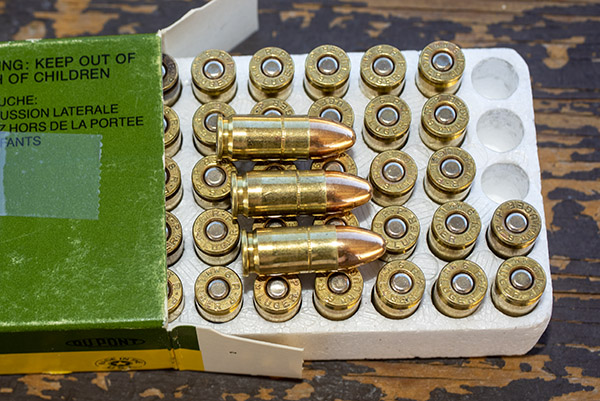
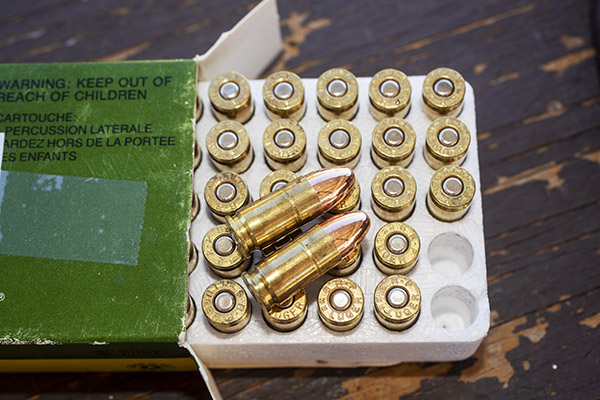

While I was shooting last week, I was a little disappointed. I thought I had done a lot better with the cast bullets back in January. I thought my jacketed groups were larger when I eyeballed the targets, but you never really know until you measure the groups.
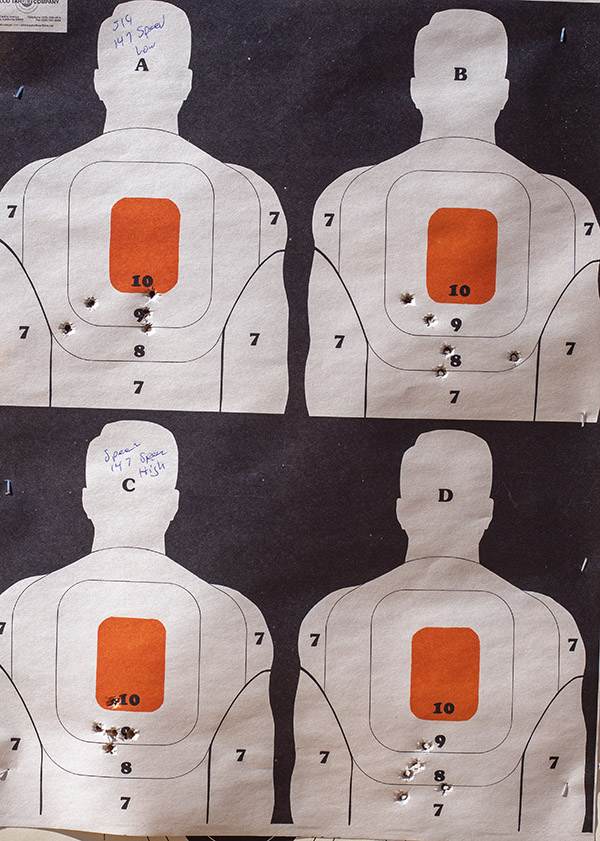
When I returned home, measured the group sizes, and tabulated the results, I was surprised. The results of the jacketed and plated bullets were not too different from what I had achieved with the cast bullets almost a year ago. Take a look:

The most surprising finding, for me, was that the average results with the jacketed bullets (versus the cast bullets) were almost identical. Here’s that data extracted from the above, shown in a table that makes it a little easier to make the comparison:

My testing showed essentially the same results for the three handguns I tested whether I used cast bullets or jacketed bullets: The SIG P226 Scorpion is the most accurate (it is a magnificent handgun), followed by the Springfield Armory 1911, followed by the Smith and Wesson 659. It doesn’t matter whether it’s with cast or jacketed bullets: The averages are eerily similar for each gun, with a very slight accuracy advantage going to the cast bullets for the SIG and the 1911, and a very slight accuracy advantage going to the jacketed bullets for the Smith 659. But the differences between jacketed and cast bullets are so small they can be ignored. Cast bullets are usually a lot less expensive than jacketed bullets, so this is good knowledge.
Help us continue to bring stories to you: Please click on the popup ads!
More Tales of the Gun are here.
Sign up for free!

